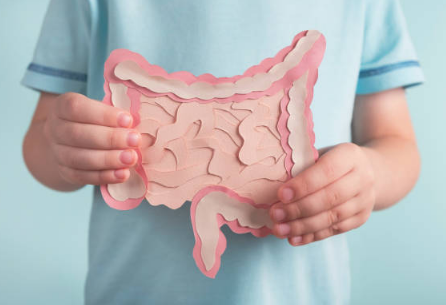The human microbiome, which is a fancy word, refers to the trillions of bacteria that inhabit the human gastrointestinal tract. These bacteria weigh up to 3 to 5 pounds per person and help control the immune system, determine if your child is allergic to peanuts, and how well they fight off cold viruses. Additionally, the microbiome is also involved in regulating metabolism and weight gain, and may be connected to the brain, meaning it can affect mood and may protect your child from mental health disorders such as autism or depression. No
Unlike the human genome, which is fixed at the time of conception, the human microbiome is largely a product of lifestyle and environment, and is most malleable during infancy and childhood. By the time children reach school age, the overall composition of their microbiome has been established and will stay with them for years, decades, or even a lifetime. Fortunately, nurturing your child’s microbiome isn’t difficult. These are simple guidelines that we follow in our family.

1. Feed the Bacteria Well
The gut microbiome thrives on dietary fiber, a complex carbohydrate found in plants. Studies have shown that hungry gut microbes eat the mucus that lines and protects the lining of the gut. If bacteria get too close to these walls, they can sound alarm bells within the immune system, causing inflammation to be brewing and eventually leading to autoimmune diseases such as inflammatory bowel disease, allergies, and asthma. Providing your child with a diet rich in fruits, vegetables, whole grains, nuts, and legumes ensures that her developing microbiome gets plenty of nutrients.
Picky diners? Try carrots dipped in hummus, steamed edamame, or black bean tortillas with avocado and whole-grain tortillas to get more fiber into your child’s diet.
Of course, many high-fiber foods don’t appeal to children right away, to say the least. So, start with a familiar option: carrots dipped in hummus, steamed edamame, or black bean tortillas with avocado on top of whole-wheat tortillas. If you think your kids will appreciate it, you can also use their imagination.
2. Eat the Bacteria Themselves
According to Georgetown University Medical Center, consuming live, viable cultures (another word for good bacteria), such as those found in many yogurts, can reduce the frequency of illness in children, especially nasty gastrointestinal infections.
Kefir, a fermented milk drink, is another form of edible bacteria (as are miso and unpasteurized kimchi, but I found them less suitable for children). But buy with caution: Many yogurts sold to children contain sugar, and foods like yogurt pretzels and yogurt salad dressings often don’t contain live bacteria at all.
3. Be Picky About Disinfection
As parents, we naturally want to protect our children from pathogenic bacteria like streptococcus and E. coli, but by disinfecting everything our children touch, we also reduce their exposure to the beneficial bacteria needed in the gut. In 2013, a team of Swedish scientists found that children who had parents who cleaned the pacifier by sucking on the pacifier (instead of cooking it on the stove) were less likely to develop eczema and asthma. It is likely that these parents are not sterilizing the pacifiers, increasing their child’s exposure to germs, which can help boost the child’s developing immune system. Your dentist may point out that this practice may increase the chance of tooth decay, but I still think we need to limit the frequency of disinfecting your child’s environment. If you’re uncomfortable with pacifier techniques, try using hand sanitizer for some restraint or switching from bleach cleaning products to natural ones.

4. Avoid Unnecessary Antibiotics
These drugs can save lives, but that doesn’t mean they don’t have drawbacks. Since antibiotics kill bacteria indiscriminately, they destroy both the beneficial and harmful parts of the microbiome. This loss can have a wider impact on your child’s long-term health than you think. A 2014 study in mice at the University of Chicago linked antibiotics to peanut allergies, while in a 2020 study, researchers at the Mayo Clinic linked antibiotic use in children under 2 years of age to an increased risk of asthma, celiac disease, and excessive weight gain. In my opinion, this effect may be due to the gradual alteration of the function of the microbiome by antibiotics. According to the study, it’s more important than ever for parents and pediatricians to reserve antibiotics only for essential conditions.
5. Play in the Garden and Snuggle up with Your Pet
Both of these activities allow your child to easily reach out to good bacteria while avoiding disease-causing bacteria. Our dogs are actually the ideal conduit between the germ-laden dirt in our yard and our kids. Instead of cringing when I saw him rubbing his nose against my daughters and licking their faces, I thought about the benefits he could bring to them with the germs he carried. For example, a study published in the Journal of the American Medical Association showed that babies who grew up in contact with dogs were less likely to develop asthma before the age of 6. Gardening exposes children to bacteria from soil and animals. In fact, every unwashed carrot is the ultimate vitamin: a fiber-rich supplement that nourishes the gut microbiome.


